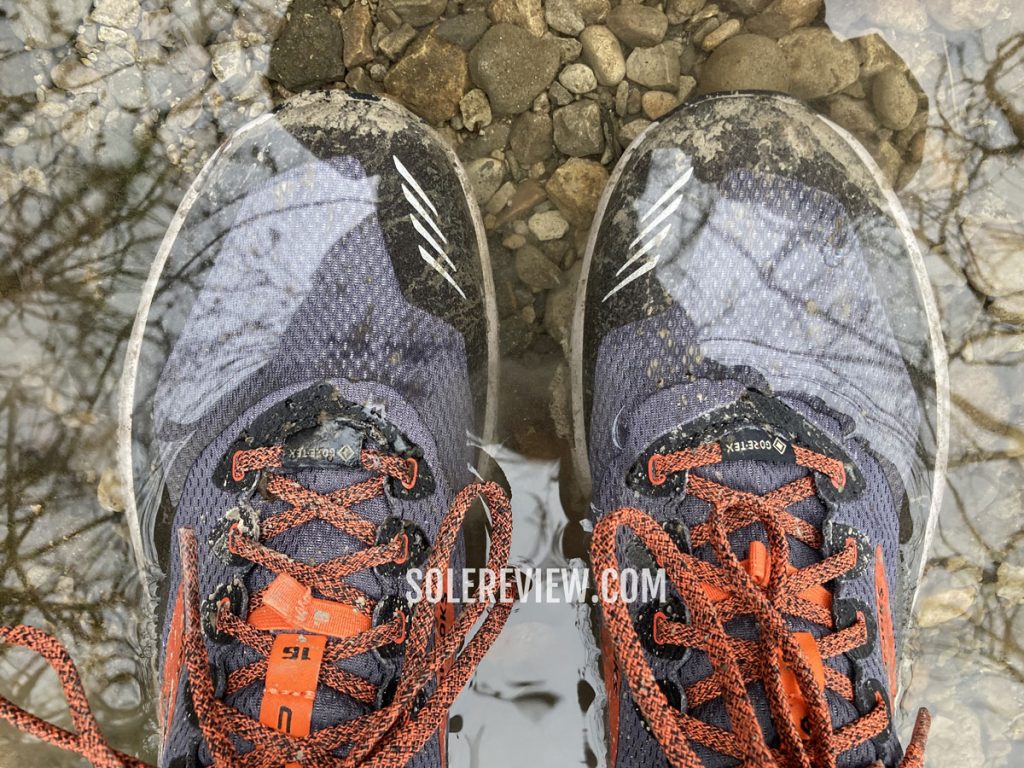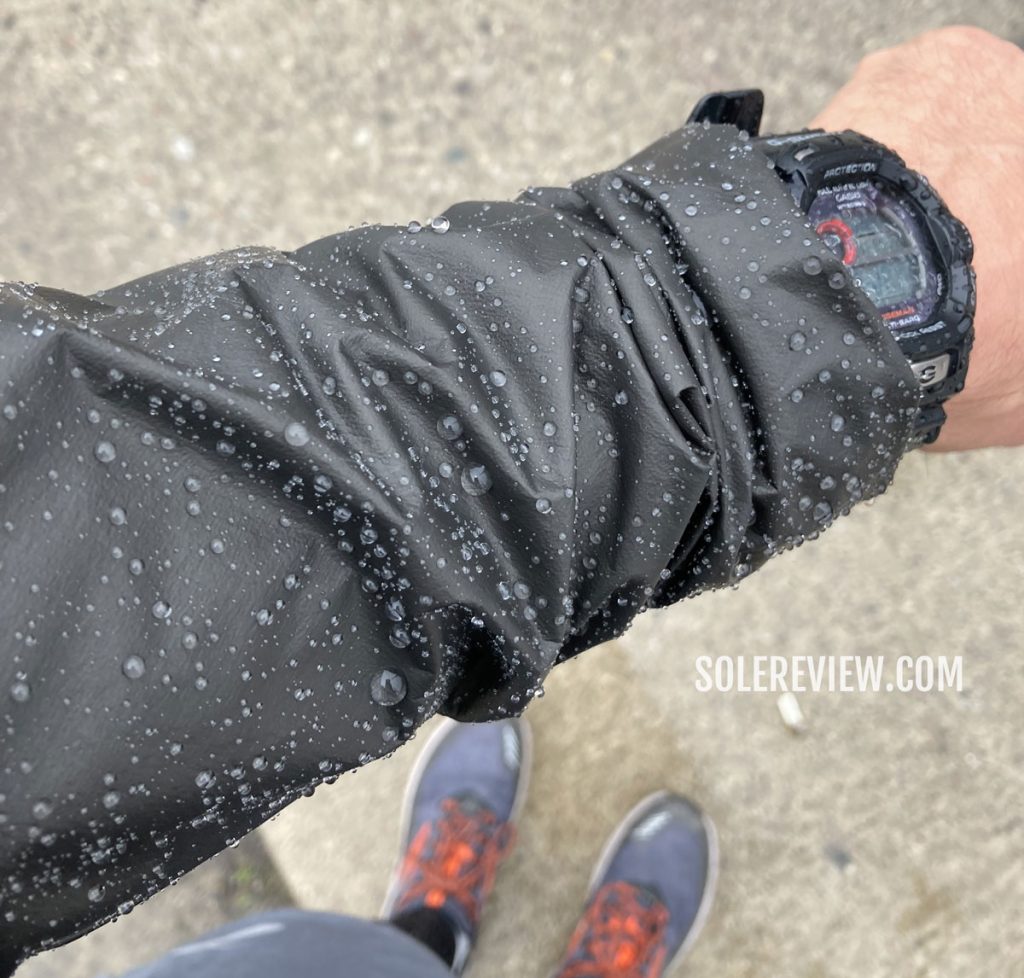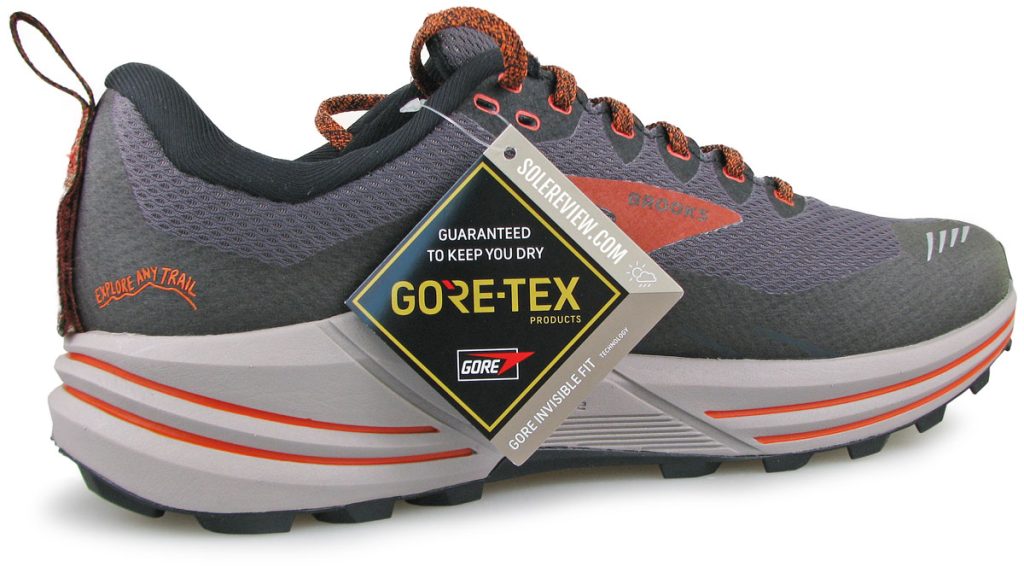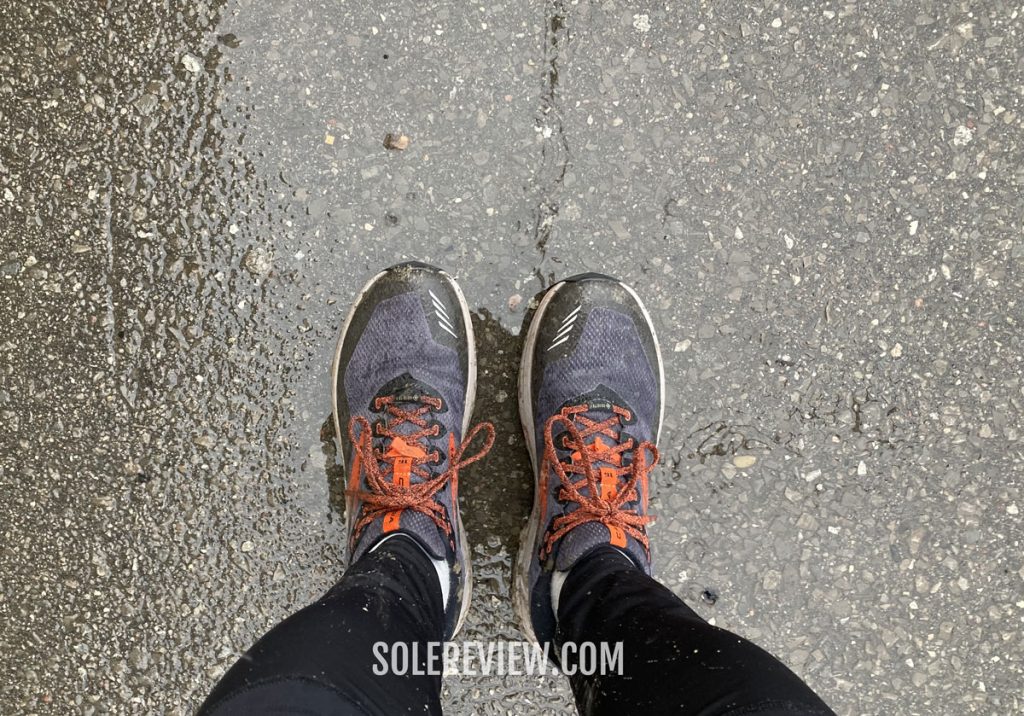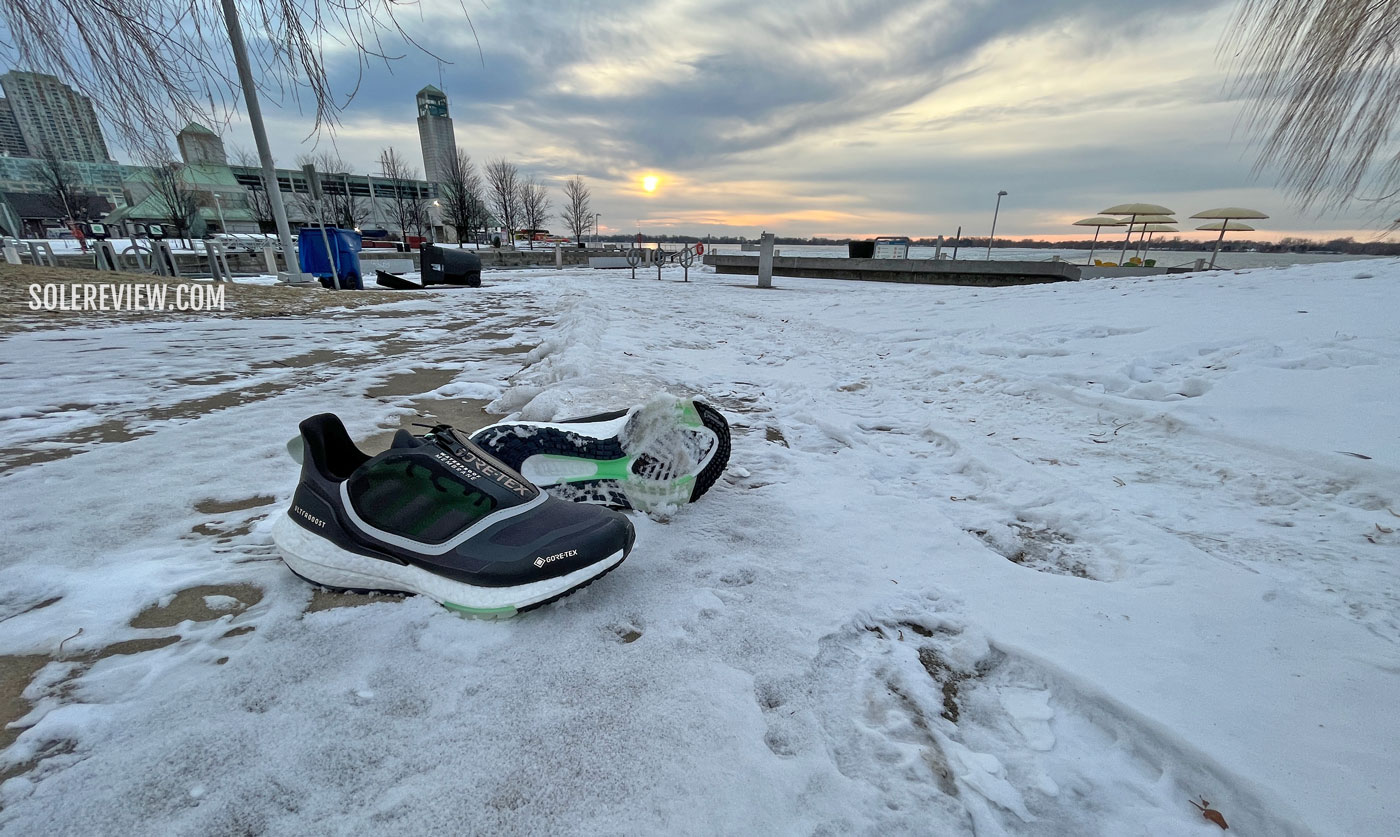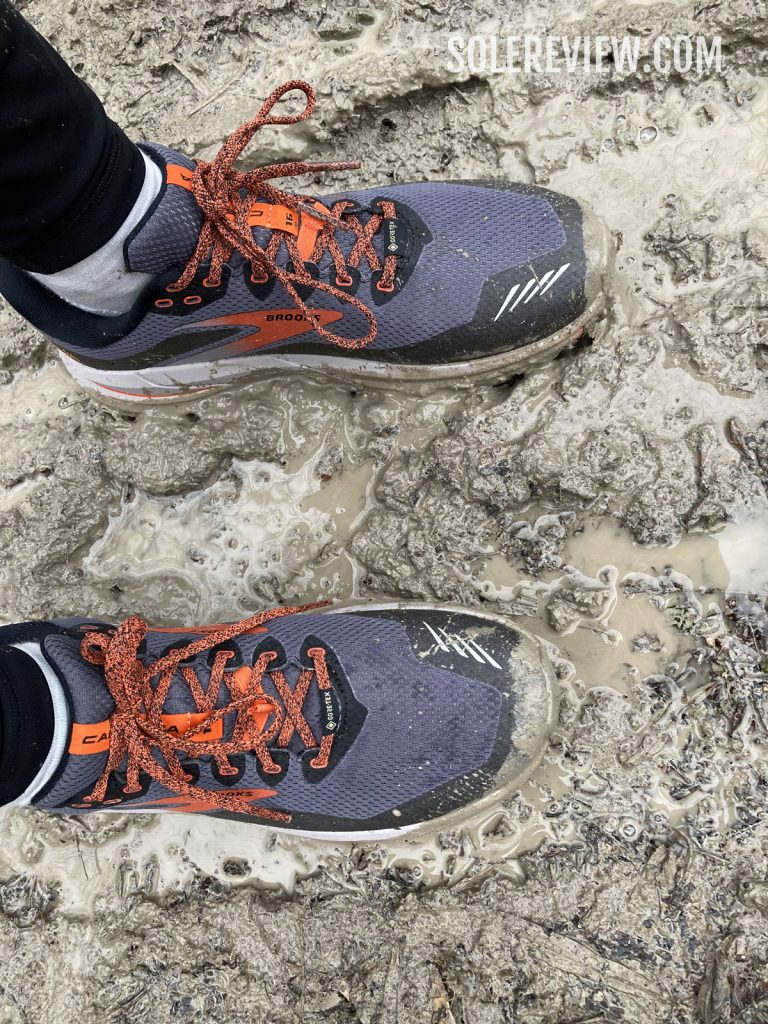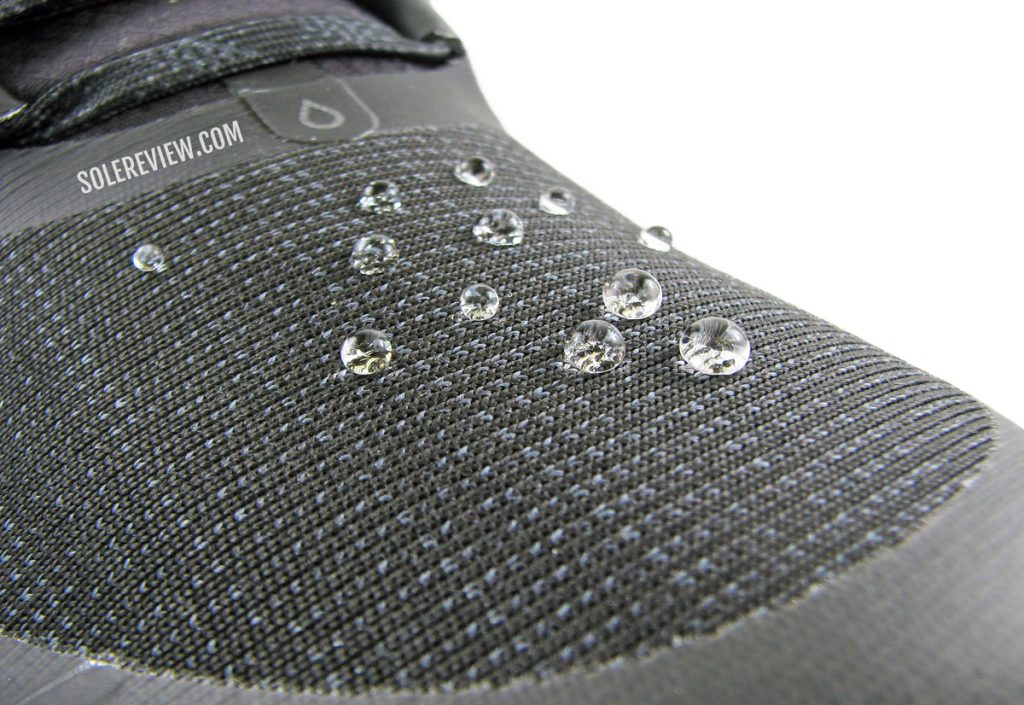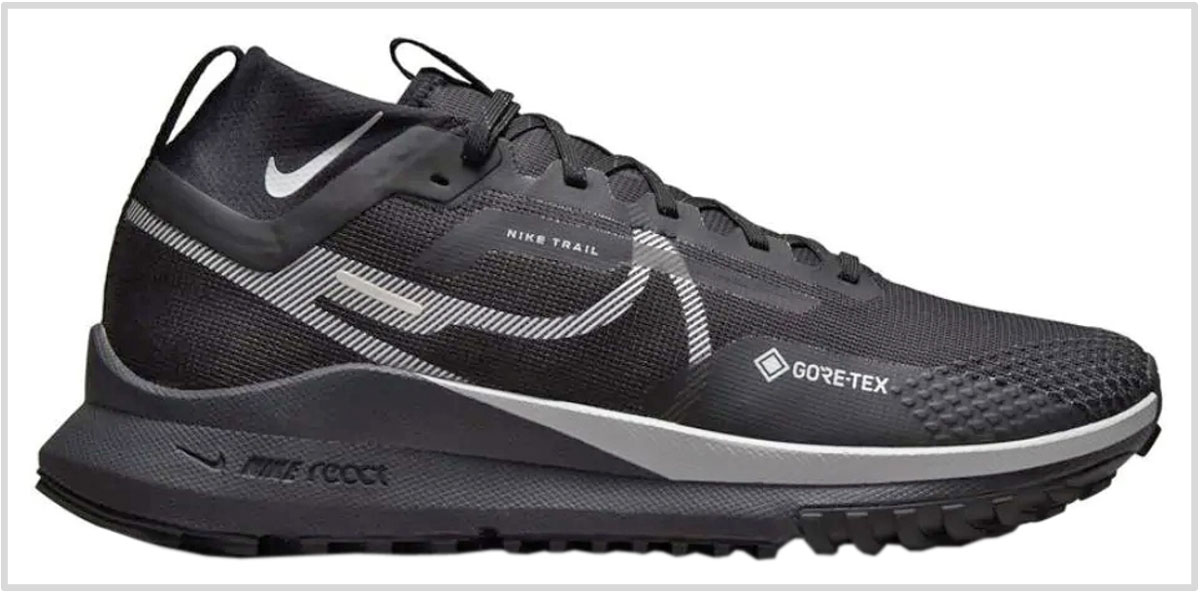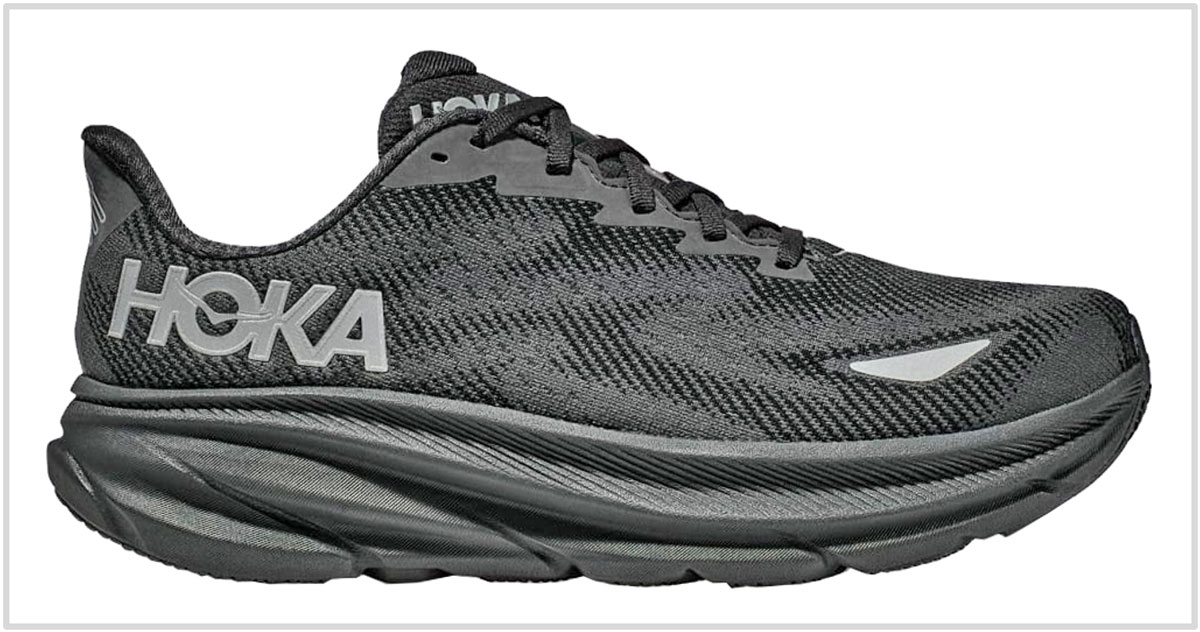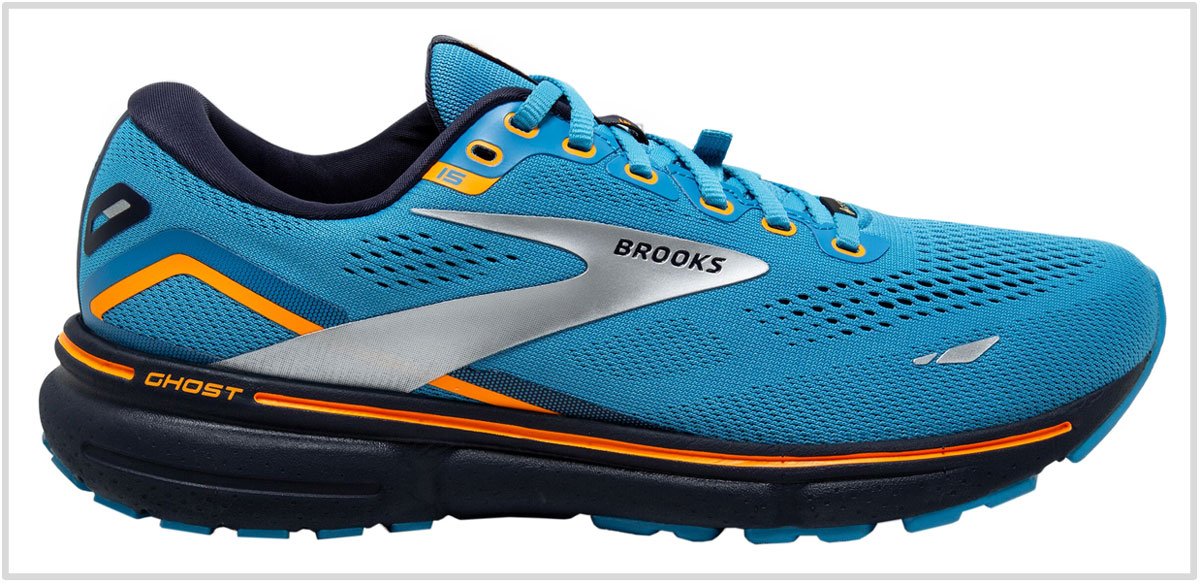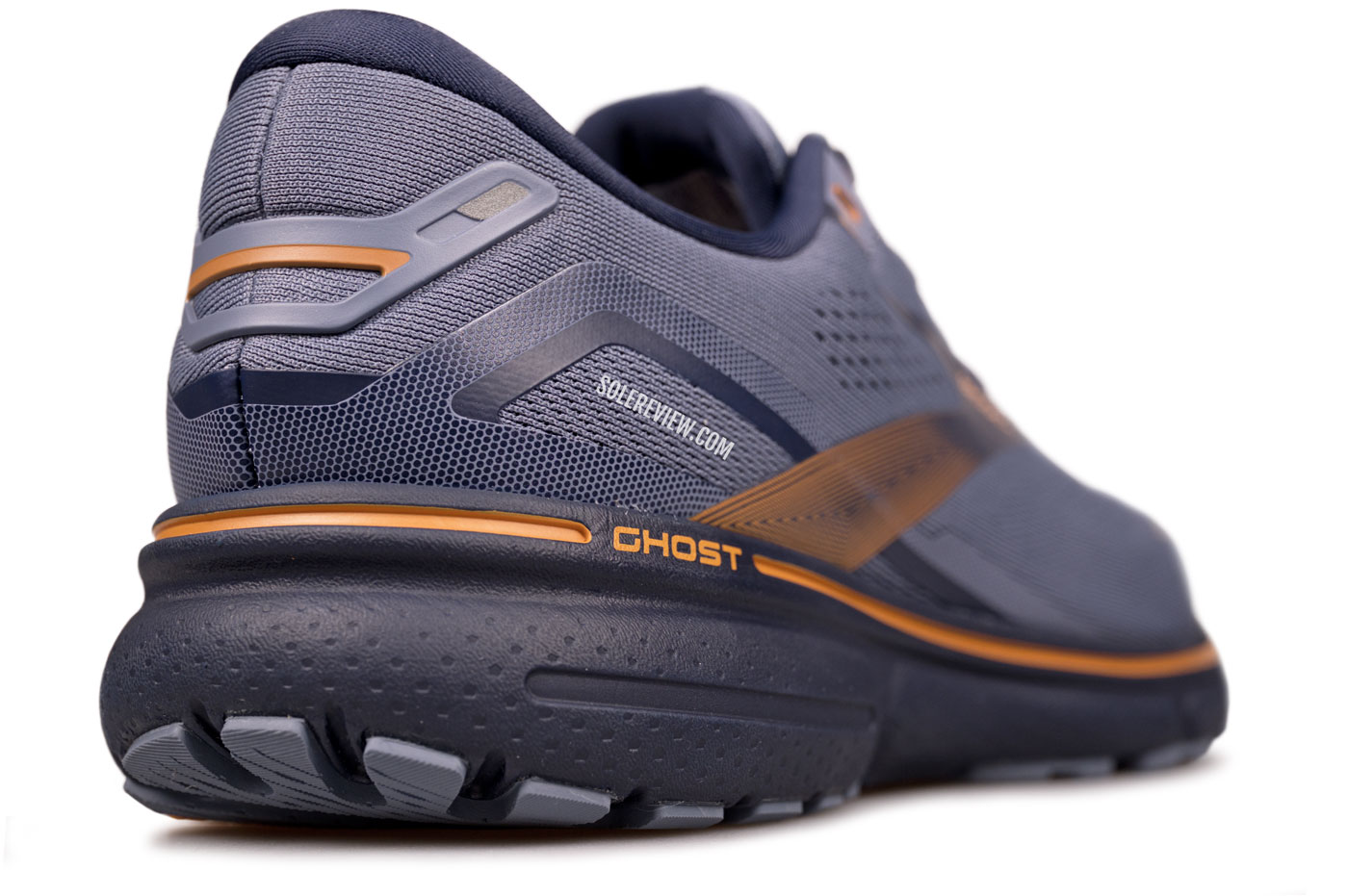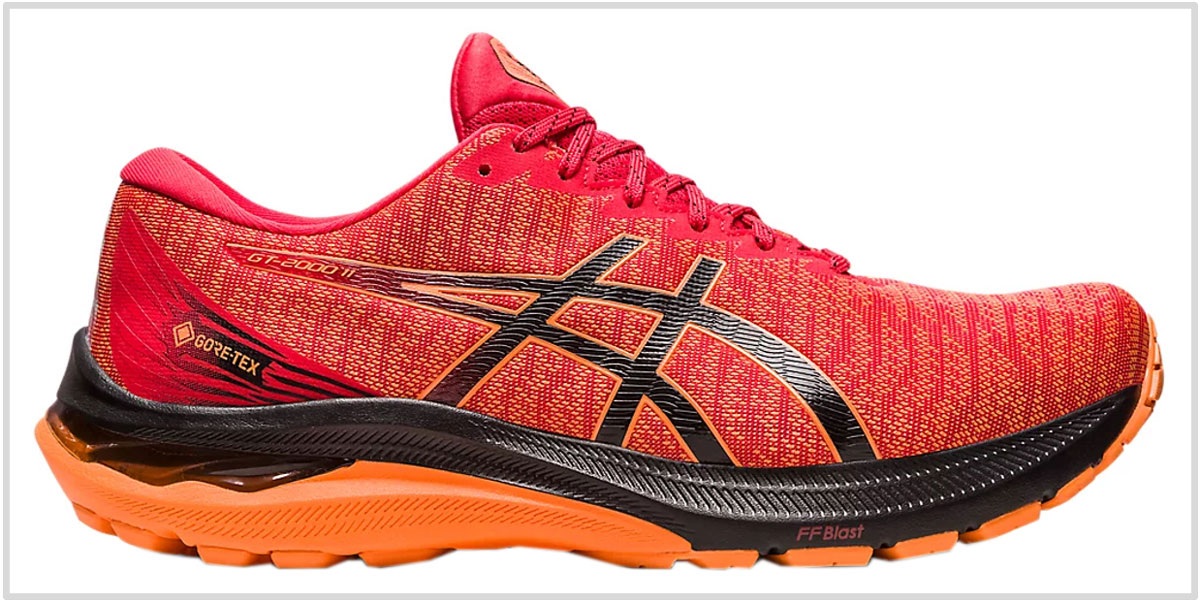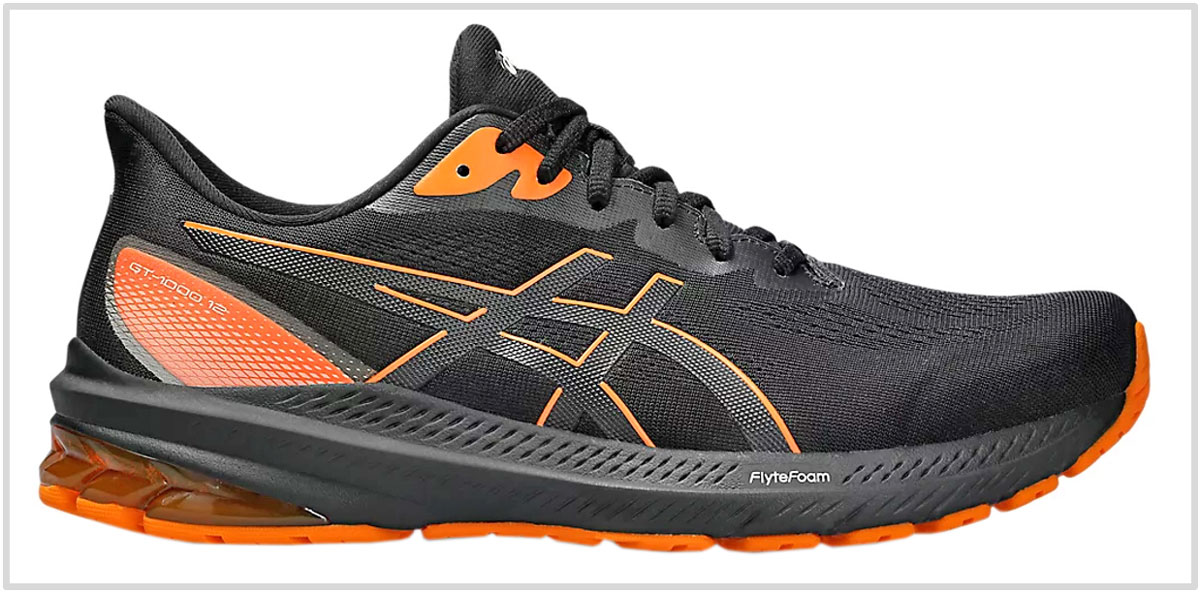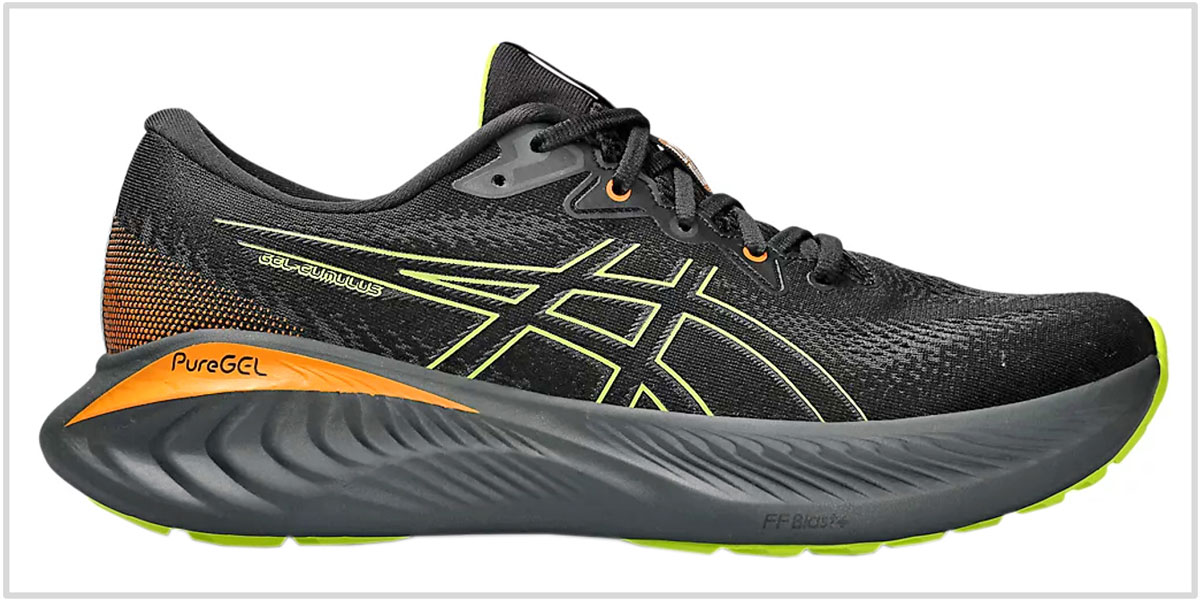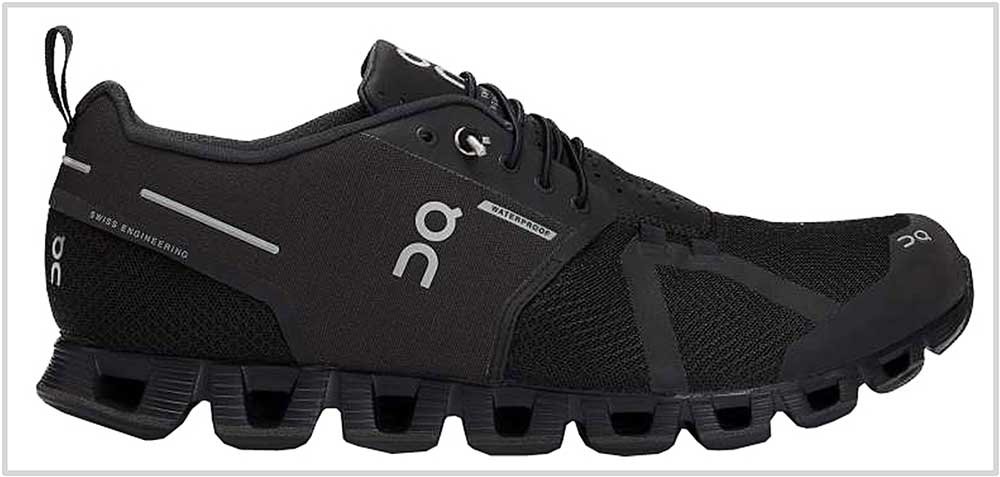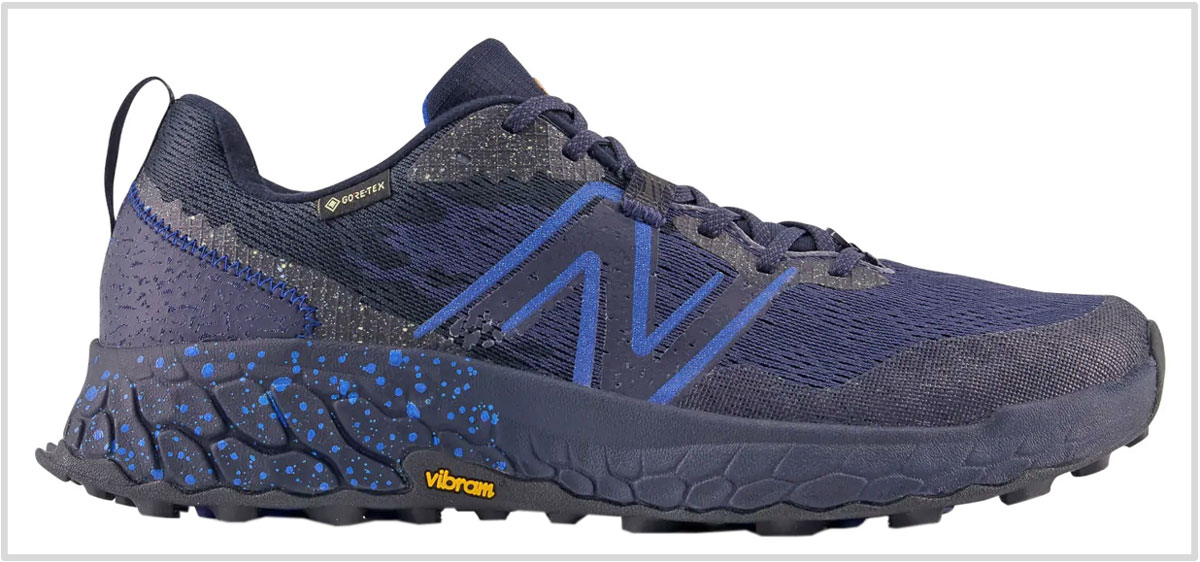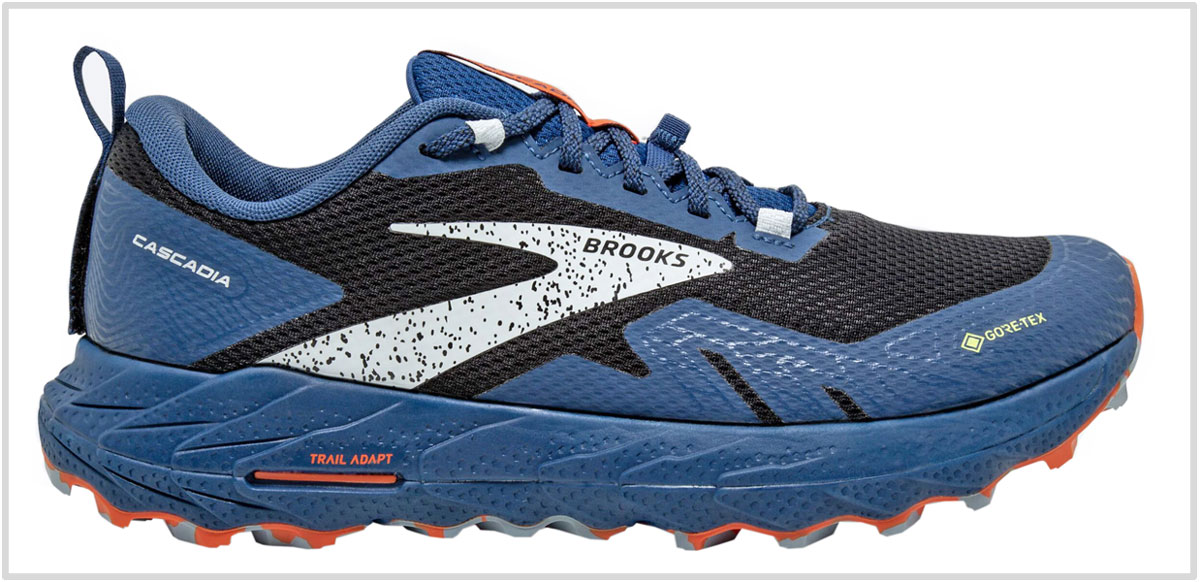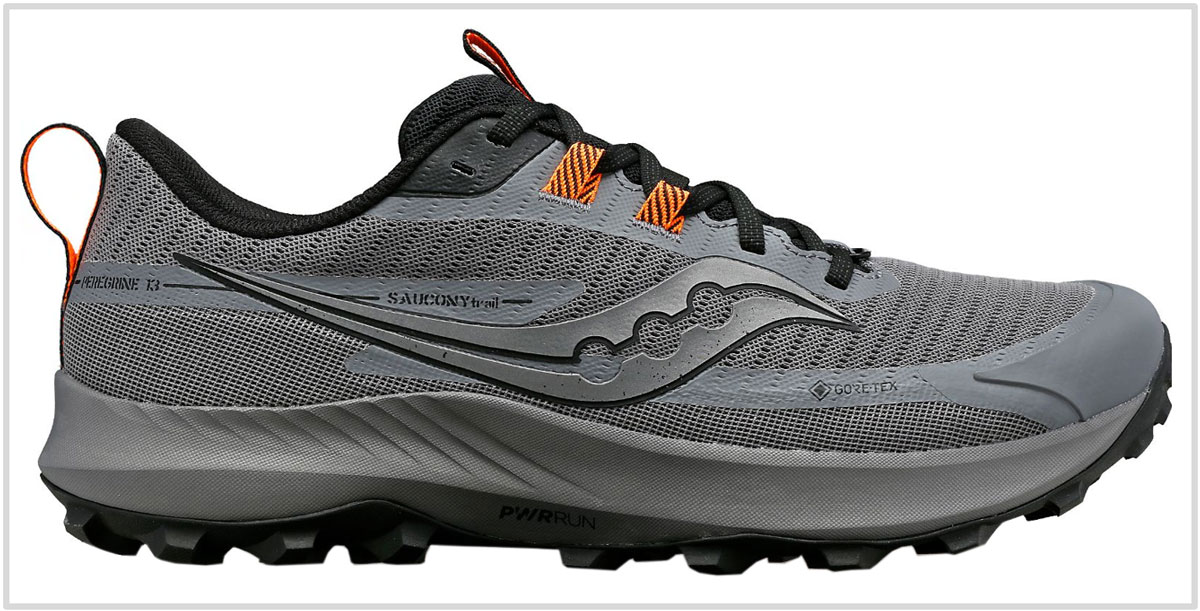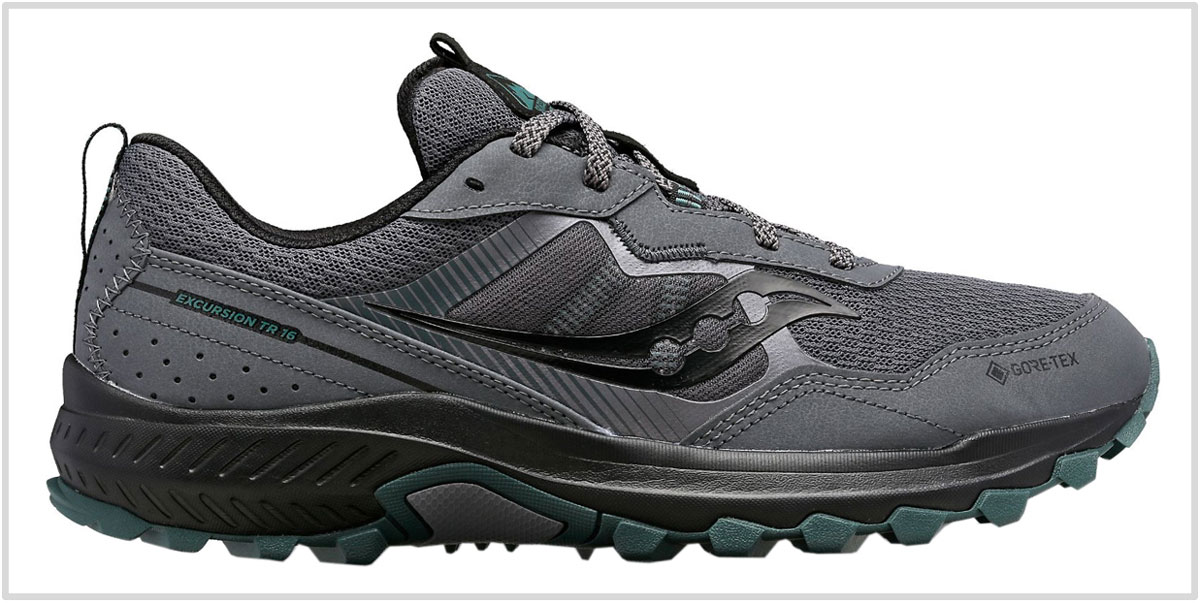This article has been updated with current models for September 2023. The Asics Cumulus 24 GTX, Brooks Ghost 14 GTX, Brooks Cascadia 16 GTX, and the Saucony Excursion TR15 GTX have been replaced with their updated versions. The Asics GT-1000 12 GTX and Hoka Clifton 9 GTX are new additions. The adidas Ultraboost 22 GTX and Asics Pulse 13 GTX have been removed.
In this product guide:
- 1. Factors to consider
- 2. Our top waterproof shoe pick: Nike Pegasus Trail 4 GTX
- 3. Waterproof high-mileage trainer: Hoka Clifton 9 GTX
- 4. Waterproof daily trainer: Brooks Ghost 15 GTX
- 5. Waterproof stability trainer: Asics GT-2000 11 GTX
- 6. Waterproof stability trainer: Asics GT-1000 12 GTX
- 7. Waterproof daily trainer: Asics Cumulus 25 GTX
- 8. Waterproof everyday sneaker: On Cloud 5
- 9. Waterproof trail running shoe: New Balance Hierro 7 GTX
- 10. Waterproof trail running shoe: Brooks Cascadia 17 GTX
- 11. Waterproof trail running shoe: Saucony Peregrine 13 GTX
- 12. Affordable Waterproof trail runner: Saucony Excursion TR16 GTX
Running shoes cannot be truly waterproof – even with a Gore-Tex membrane.
Waterproof uppers are usually good at keeping the water out, but the low-cut design of most running shoes cannot completely prevent moisture from entering. Water from the occasional splash gets inside through the heel collar. And the same lining that keeps the water out will also slow the draining process.
A running shoe with a Gore-Tex lining is like a waterproof rain jacket without a hood. The jacket will work to a certain extent, but only half as effectively as one with a waterproof shroud.
Socks are also good at absorbing water, so the dampness will eventually find its way in. As a side note, wearing a pair of waterproof socks is one way to keep your feet dry. We even wrote a guide on such a product.
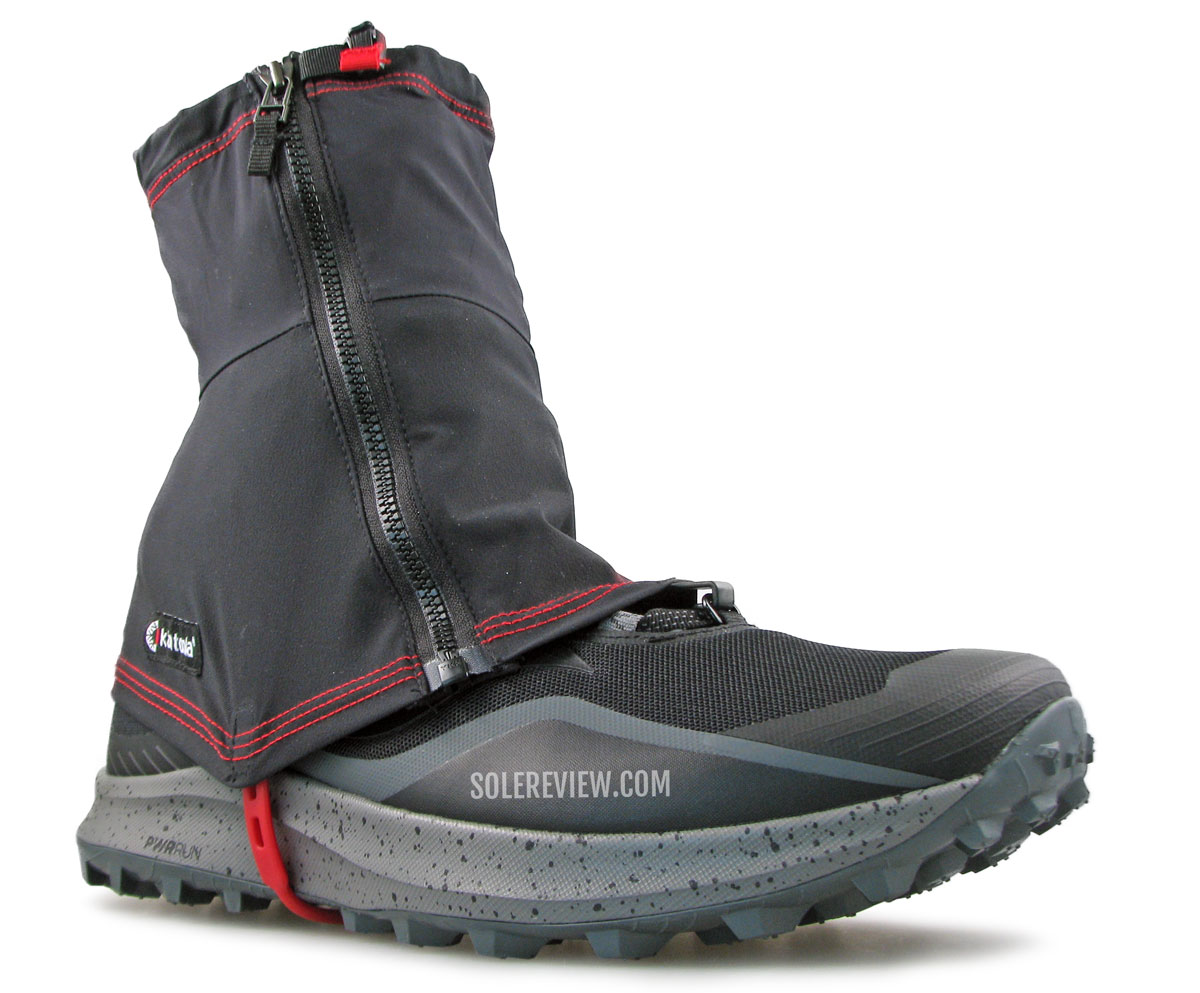
Use an aftermarket gaiter to boost the waterproofing capabilities of your GTX shoe.
Using a waterproof gaiter improves the chances of staying dry. However, waterproof gaiters are more comfortable under cooler temperatures because they don’t breathe well.
So are waterproof running shoes useless? Why pay the Gore-Tex premium if there’s no guarantee of staying dry?
A waterproof membrane is like a water delay timer. When caught in the occasional rain, a Gore-Tex lining keeps the feet dry for longer. It’s the difference between the feet getting soaked within 5 minutes versus staying dry for up to an hour.
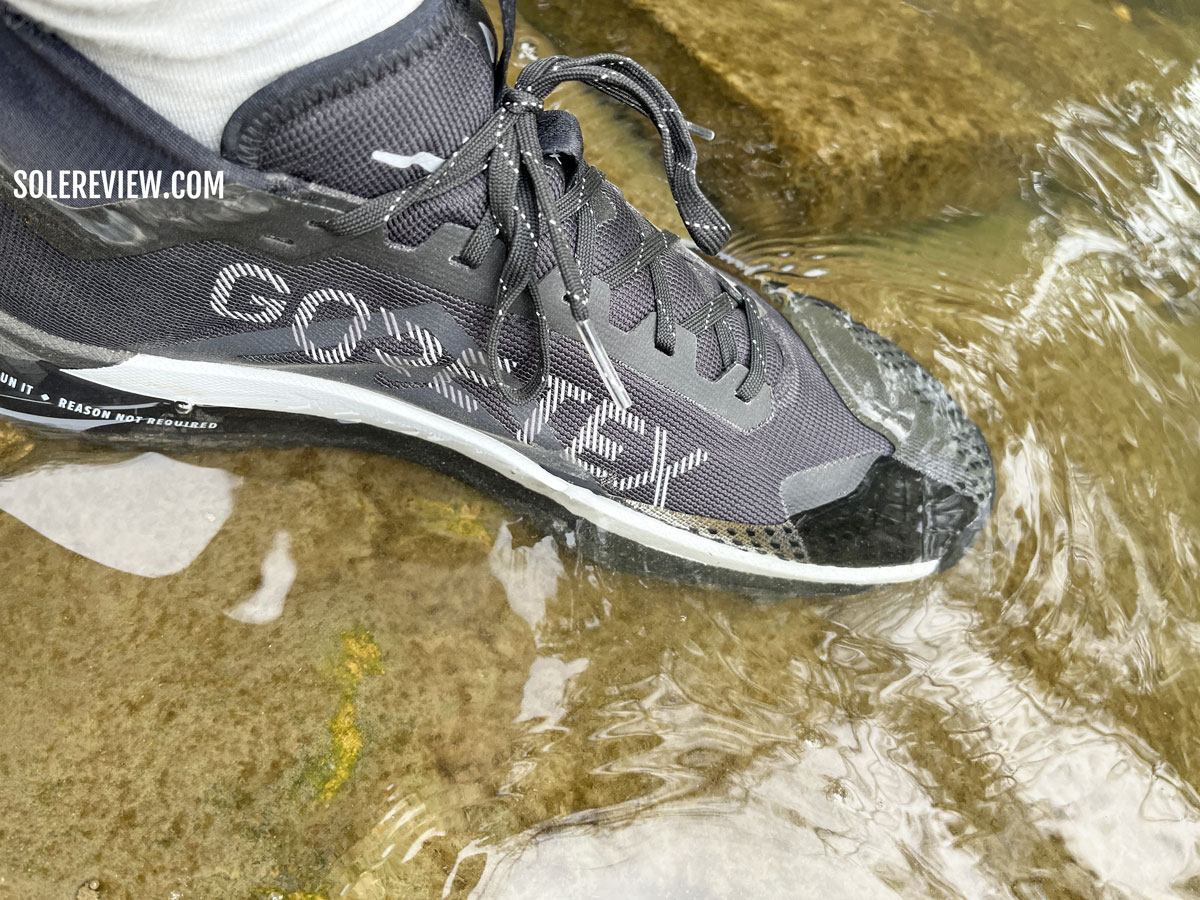
Unless we’re talking about a half-marathon or longer, a waterproof running shoe repels wetness during the entire run. Of course, we’re not talking about thunderstorm-grade rain here – in which case you should be indoors instead of being wet and miserable.
A waterproof shoe also does a much better job of protecting against splashes when compared to open mesh footwear.
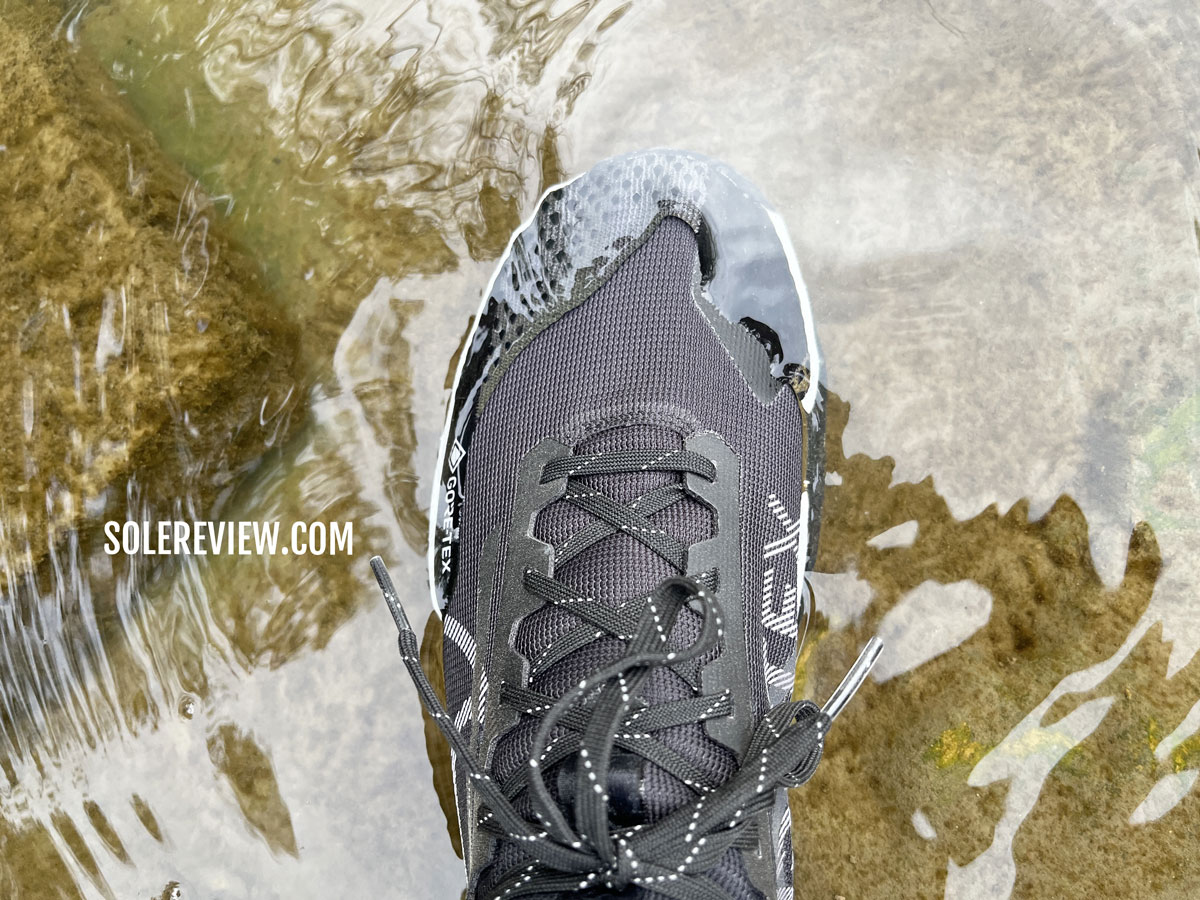
The upper is waterproof over the forefoot and half of the midfoot.
Some trail routes involve jumping over narrow water streams, so the occasional misstep doesn’t have to soak your feet.
Waterproofing is also very useful when running on muddy trails. The upper keeps the moisture away from the foot. Many Gore-Tex lined shoes have protective overlays and use mesh materials with a closed structure. This design prevents the mud from sticking to the shoe.
There’s an added benefit of a waterproof running shoe. The wind-blocking upper keeps the insides toasty during the colder months.
(Related read: The best reflective running shoes.)
Now that we’ve built a case for waterproof shoes, what kind should you buy? That depends on where the runs take place. If it’s off-road, then the answer is obvious; buy trail running shoes with a Gore-Tex membrane. Shoes like the Brooks Cascadia 17, New Balance Hierro V7, and Saucony Peregrine 13 even feature gaiter attachment points.
Road running shoes with a Gore-Tex upper are covered in the first part of this guide.
Trail running shoes are an entirely different beast. We’re spoiled for choices here, as most companies sell GTX-equipped trail shoes.
Adidas trail footwear used to have a near-monopoly on this guide, but other players like Asics and Saucony have caught up. Nike used to be inconsistent with its Gore-Tex-equipped products, but that’s changing quickly. The Gore-Tex version of the Pegasus 4 Trail is available in men’s and women’s versions.
And if you’re wondering why the Nike Pegasus 39 Shield does not feature here, that’s because they are merely water-repellent and not waterproof.
Category 1: Waterproof road running shoes
1) Nike Pegasus Trail 4 Gore-Tex
Though this shoe is called the Pegasus ‘Trail’, this is very much a road-trail hybrid. Just like the Pegasus Trail 3 GTX, this waterproof running shoe works equally well on slushy roads as it does on unpaved surfaces.
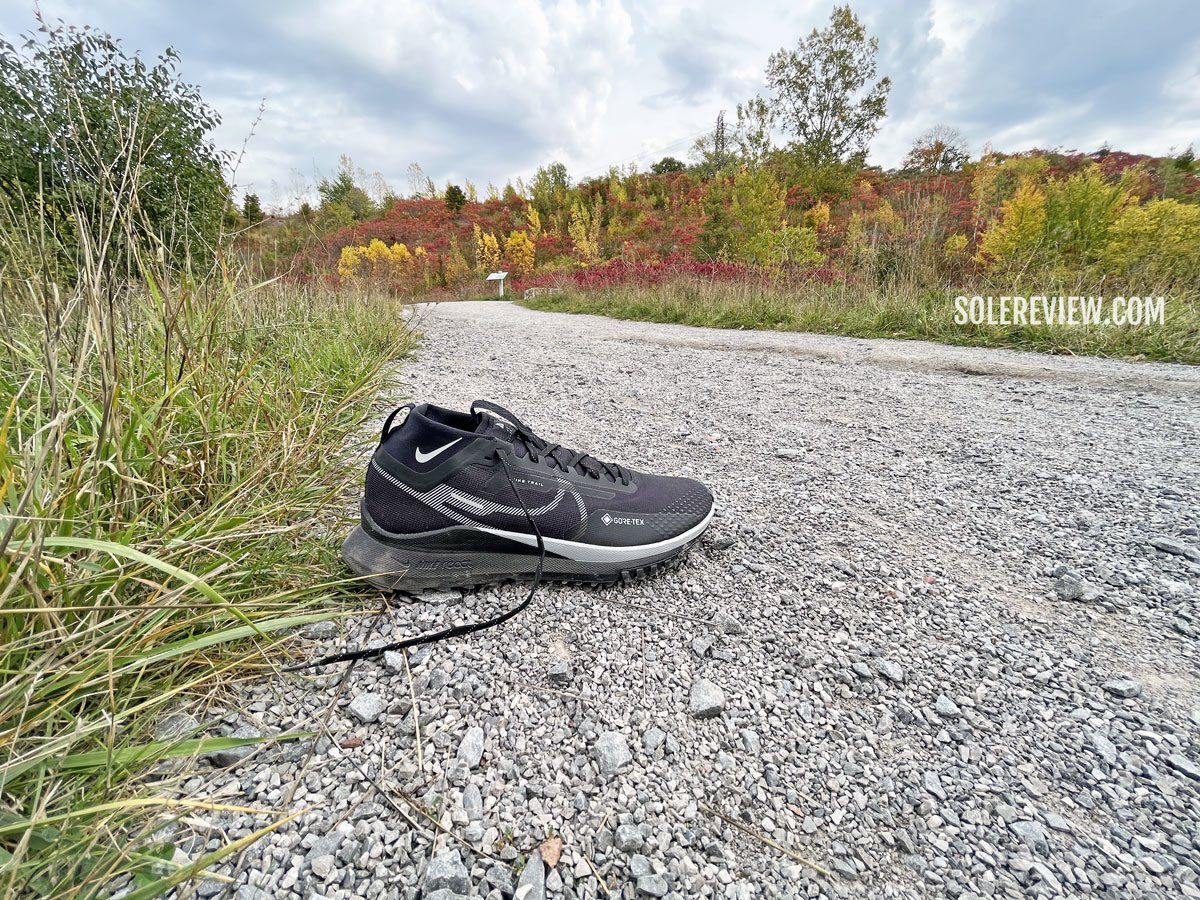
There’s a good reason why this shoe is known as a road-trail hybrid. It’s closer to a road shoe than a serious trail runner. It does best on flat terrain – like this gravel path, for example.
The mild outsole geometry, comfortable React midsole, and absence of a rock plate + gaiter point tell us what kind of shoe the Pegasus Trail is.
At best, this is a shoe for flat trails and non-technical terrain. The Pegasus Trail 4 is even less trail-worthy than the outgoing Pegasus Trail 3, as the full-length rubber outsole is replaced by a milder geometry with multiple lugs.
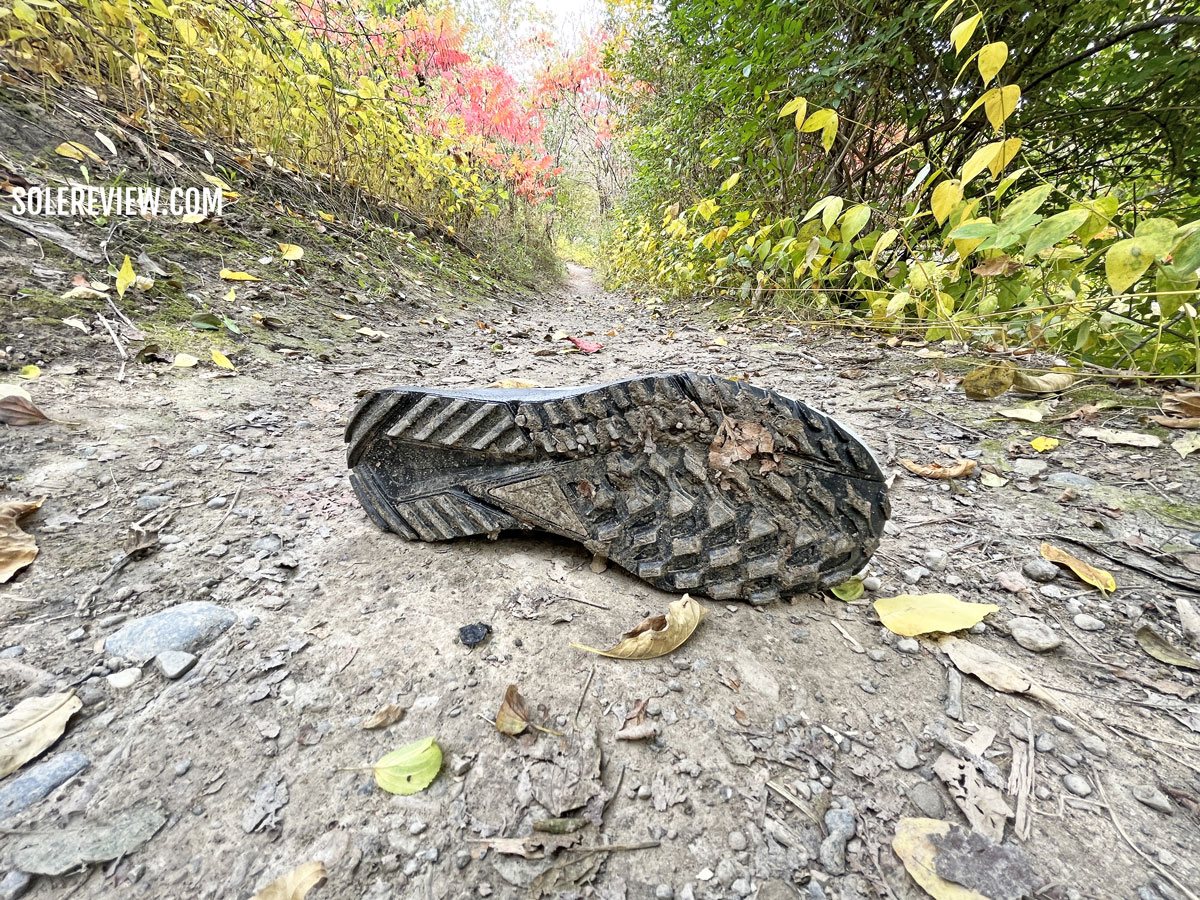
As long as the trails are flat and non-technical, the shoe performs as advertised.
The articulated outsole lugs do not have deep lugs, so that makes the shoe versatile enough for road use. The React foam core and removable insole give the Pegasus Trail the ride comfort of an everyday trainer.
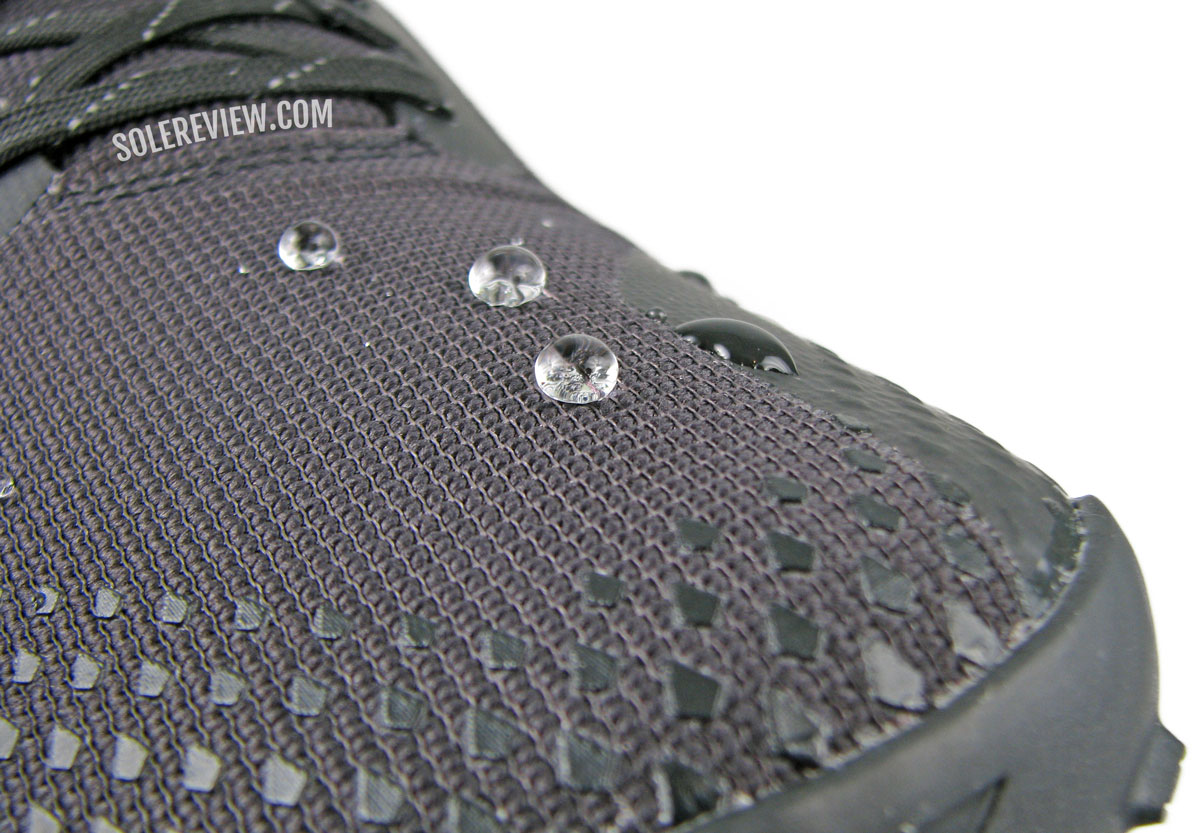
The waterproof upper prevents the water from sticking.
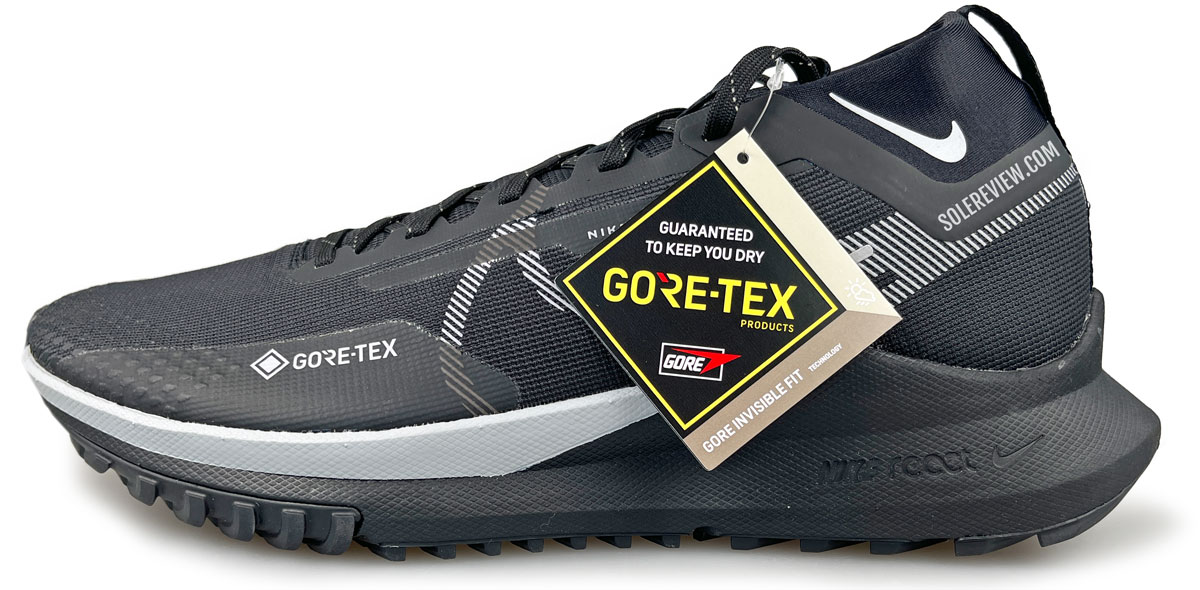
Like the last couple of versions, the Pegasus Trail 4 Gore-Tex has an outdoor-ready upper. Rubberized overlays add protection as well as durability to the upper. In the rear, there’s a mini-gaiter to minimize the entry of debris.
As is tradition, the Pegasus Trail 4 is offered in two variants. There’s the standard non-GTX version, as well as a waterproof upper with a Gore-Tex membrane. Our in-depth review of the Nike Pegasus Trail 4 is here.
2) Hoka Clifton 9 GTX
For a long time, Hoka did not have a weatherproof road shoe.
Guess what – Hoka has updated one of their most popular shoes with a Gore-Tex upper and grippy outsole. From the outside, the Clifton 9 looks like an all-black color of the standard Clifton 9 (Our review is here). Certain components like the midsole, upper profile, and insole are the same as the non-waterproof variant.
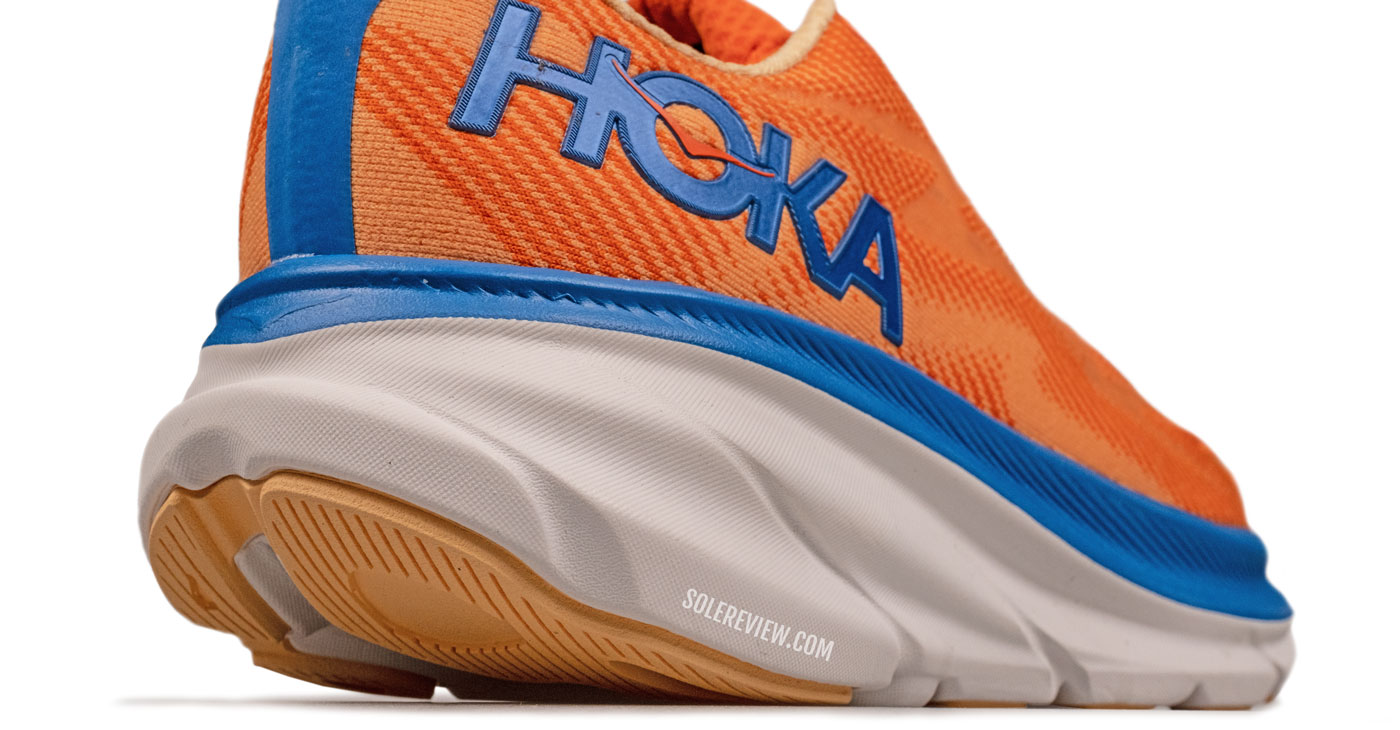
This is the non-waterproof Hoka Clifton 9. As you can see, the GTX version has the same midsole and upper aesthetics. Only the outsole and waterproof membrane are exclusive to the GTX variant.
For a $20 premium over the standard version, Hoka offers a waterproof upper fitted with a Gore-Tex and modified outsole. This is where the Hoka Clifton 9 differentiates itself from other road GTX running shoes.
Whereas most models (like the Brooks Ghost, Asics Cumulus) use the same outsole as the standard variant, the Clifton 9 offers a outsole design and material that’s better suited for wet days. Hoka calls this rubber ‘Durabrasion’.
3) Brooks Ghost 15 GTX
The Ghost’s versatile ride and fit character has made it a commercially successful fixture within Brooks’s running line. It’s also very predictable between versions, meaning that there’s very little difference in performance between the Ghost 14 and Ghost 15.
The single-density EVA foam midsole of the G-13 was an improvement over the dual-density midsole of the Ghost 12.
The Ghost 15 benefits from the same performance traits as the 14. There’s ample cushioning and versatility, be it regular training runs or longer workouts that require a higher level of comfort. Regardless of the standard or Gore-Tex version, the ride quality is the same across both.
This is a Brooks shoe, so the upper is comfortable and secure. The engineered mesh upper and padded heel/tongue have a positive influence on the fit and feel.
The same traits are built into the Gore-Tex version of the Ghost, so it’s an excellent daily trainer that keeps the feet dry during rains.
4) Asics GT-2000 11 GTX
Within Asics’s stability shoe universe, the GT-2000 11 sits halfway between the GT-1000 12 and Kayano 30.
So who is the GT-2000 11 for? It’s a traditional stability trainer with a medial post molded into the inner midsole for a mild ‘pronation-control’ touch. Last year, the GT-2000 10 arrived with several refinements. The redesigned upper had softer interiors, and the Flytefoam midsole was reformulated for a cushier ride.
If your idea of a waterproof daily trainer is a comfortable mild-support running shoe, then the GT-2000 11 GTX checks most boxes. The functional upper is comfortable with a secure and true-to-size fit.
5) Asics GT-1000 12 GTX
The Asics GT-1000 12 is a baby Kayano – it is the entry-level stability running shoe with Asics’s line-up, with the other two being the GT-2000 12 and Kayano 30.
The GT-1000 12’s design hasn’t kept up with the Kayano 30’s and GT-2000 12’s design yet. The midsole has a tiny piece of firmer foam on the inside – a baby version of a medial post if you will. There’s even a visible Gel window, a feature that is now missing on the Kayano 30 and GT-2000 12.
But for all practical purposes, the ride quality is very neutral – the medial post doesn’t create a noticeable cushioning bias. The non-GTX version is an affordable everyday trainer with sufficient comfort for up to a 10K.
This time, there’s a surprising high additional cost for the waterproof Gore-Tex variant of the GT-1000 12. The GT-1000 11 GTX was $120; now it’s $140. At the time of publishing this guide, the GT-2000 11 sells for the same price. It appears likely, though, that the GT-2000 12 GTX will be be priced at $160.
The GT-1000 12 GTX has an identical ride quality as the GT-1000 11 a waterproof Gore-Tex membrane that keeps the moisture out.
6) Asics Cumulus 25 GTX
The Cumulus is positioned as a lower tier version of the Asics Nimbus, so it only makes sense that it’s based on a similar design.
The Cumulus 25 is a very different shoe than the one it replaces. The 25 gets rid of the 24’s visible Gel unit and dual-density midsole. In their place is a single-density Flytefoam midsole with a concealed Gel unit.
Nonetheless, both the Cumulus 24 and 25 serve the same goal – this is a cushioned neutral trainer for everyday runs.
It’s just that the cushioning is delivered in a different way than the 24 – it’s deeper, and the softness has better consistency from the heel to toe. Dropping the outer Gel unit also makes the ride more supportive.
We’re not a fan of the new outsole design, nor the upper that feels constricting and stuffy. On a positive note, this variant of the Cumulus 25 has a waterproof Gore-Tex membrane for running during damp weather.
It’s a matter of personal opinion, but we recommend the Ghost 15 GTX or Clifton 9 GTX over the Cumulus 25.
7) On Cloud 5 Waterproof
This is the waterproof version of the popular On Cloud 5. Since there are less expensive alternatives, buy this shoe only if you’re a fan of their unique cushioning system and upper fit. The foam and rubber pillar midsole has plenty of comfort for runs and urban adventures.
Several aspects of the shoe could be improved. Long-term waterproofing is sketchy, and the part foam, part rubber outsole isn’t the grippiest.
Having said that, the ON Cloud is worth considering as a waterproof athleisure alternative.
Also see: On Cloudventure waterproof.
Category 2: Waterproof trail running shoes
8) New Balance Fresh Foam Hierro 7 GTX
Even though the Nike Pegasus Trail 4 has the road-trail hybrid market cornered, the waterproof version of the Hierro V7 is just as good and better value at $150. Also, the Hierro V7 is slightly more trail-worthy due to its single-piece Vibram outsole and more aggressive lug architecture.
Unlike the Pegasus Trail, the Hierro V7’s upper has a gaiter attachment point. That’s helpful if you need to extend the waterproofing capabilities of the Hierro. When used without a gaiter, the Gore-Tex upper will keep the water out on damp trails and during mild showers.
The secure-fitting upper is comfortable and protective; the padded heel and tongue make the interiors soft, whereas the layered mesh adds durable protection on the trail.
9) Brooks Cascadia 17 GTX
Just like the Brooks Ghost 15 GTX, there’s a $30 premium for the waterproof version of the Cascadia.
As a standalone shoe, the Brooks Cascadia 17 is a competent trail running shoe that gets overhauled for 2023. The top-to-bottom redesign of the Cascadia 17 results in a few performance-related updates over the Cascadia 16.
The plate inside the 17 is a departure from the ‘ballistic rock shield’ of the 16. Instead, the plate is now sandwiched between the two layers of midsole foam. It covers the forefoot as well as the midfoot; it’s articulated in a fork-like shape in the front for an improved range of motion. In the rear, it forms a wing on the sides – this is vaguely similar to the adidas Solarglide’s design.
The articulated structure makes the midsole flexible while protecting the foot from the roots and rocks. A stick ‘Trailtack’ rubber outsole has deep yet widely-spaced lugs that deliver grip with minimal clogging. The Cascadia 17’s outsole is also multi-piece, so it’s more capable of adapting to off-road terrain when compared to the Cascadia 16’s one-piece outsole.
The Cascadia 17’s midsole uses a tweaked version of Brooks’s DNA Loft foam. The foam stack delivers a stable and comfortable ride over the off-road terrain.
Protective overlays cover much of the upper and act as a barrier against moisture. The toe-box has an accommodating and true-to-size fit profile.
There’s a waterproof Cascadia 17 Gore-Tex available for purchase as well. Except for the waterproof lining and the slightly different upper materials, the functional benefits of the GTX variant are identical to the stock Cascadia.
10) Saucony Peregrine 13 Gore-Tex
Rock plate? Check. Grippy PwrTrack outsole? Check. Midsole comfort? Yes. Waterproof? Yes, of course.
That’s the Saucony Peregrine 13 Gore-Tex for you. From a ride and fit viewpoint, the Peregrine 13 is very similar to the Peregrine 12 – the newest model retains the core character of this popular trail shoe.
The waterproofing isn’t the only reason why the Peregrine features on our guide. It’s also got a 4 mm heel-to-toe drop, a feature that not many waterproof trail running shoes have.
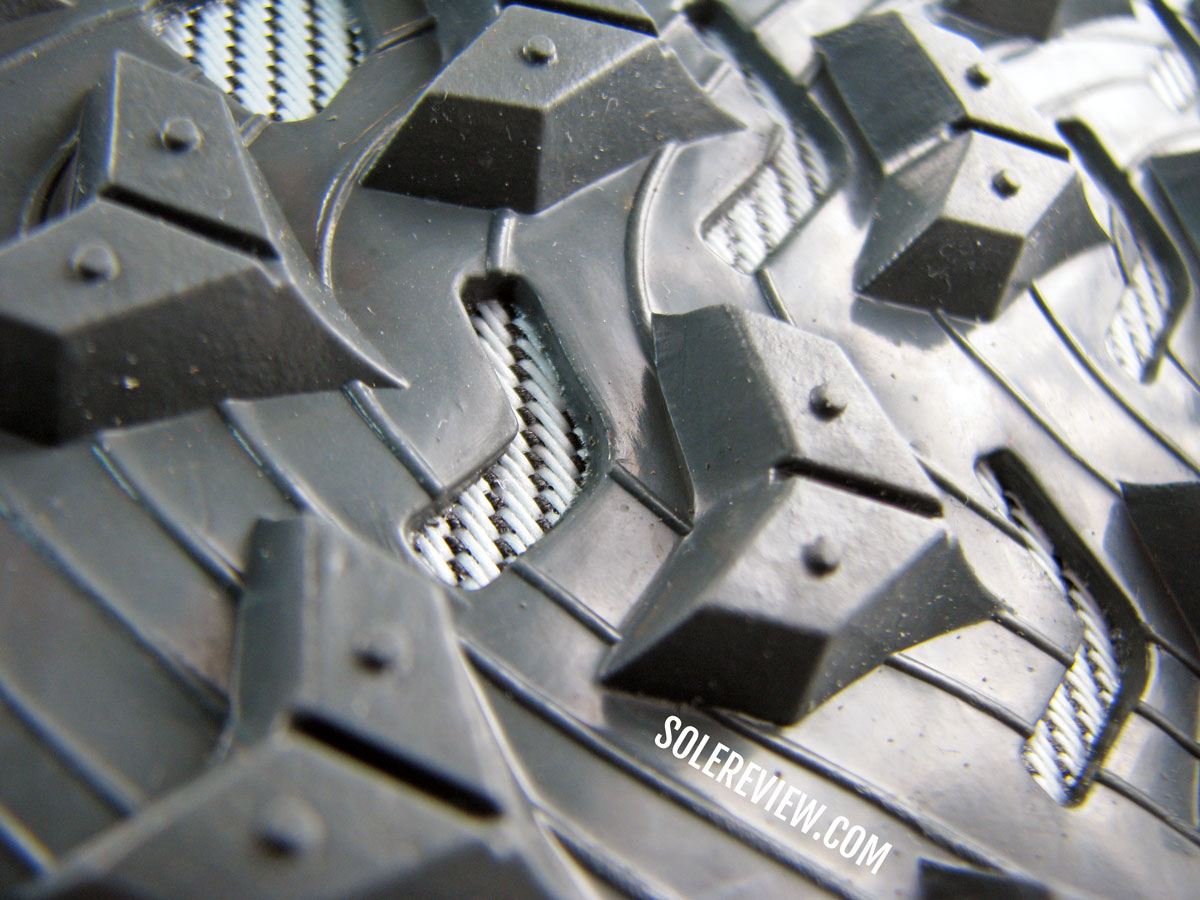
The Peregrine’s rock plate isn’t a ‘plate’ per se, but a woven layer that’s also flexible and protective.
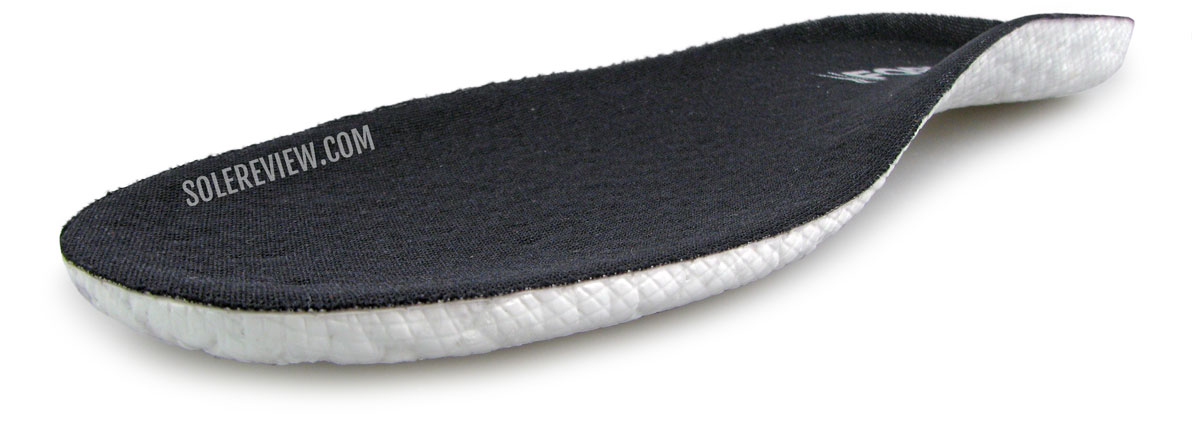
The Pwrrun+ footbed (expanded Polyurethane) was introduced on the Peregrine last year.
The firm midsole creates a stable ride over uneven terrain, and a flexible rock-shield protects the foot on uneven terrain. The Peregrine 13 also has a thick insole that’s made entirely of Pwrrun+ – Saucony’s version of adidas Boost foam.
This thick layer of resilient foam contributes to overall ride comfort without affecting the transition quality.
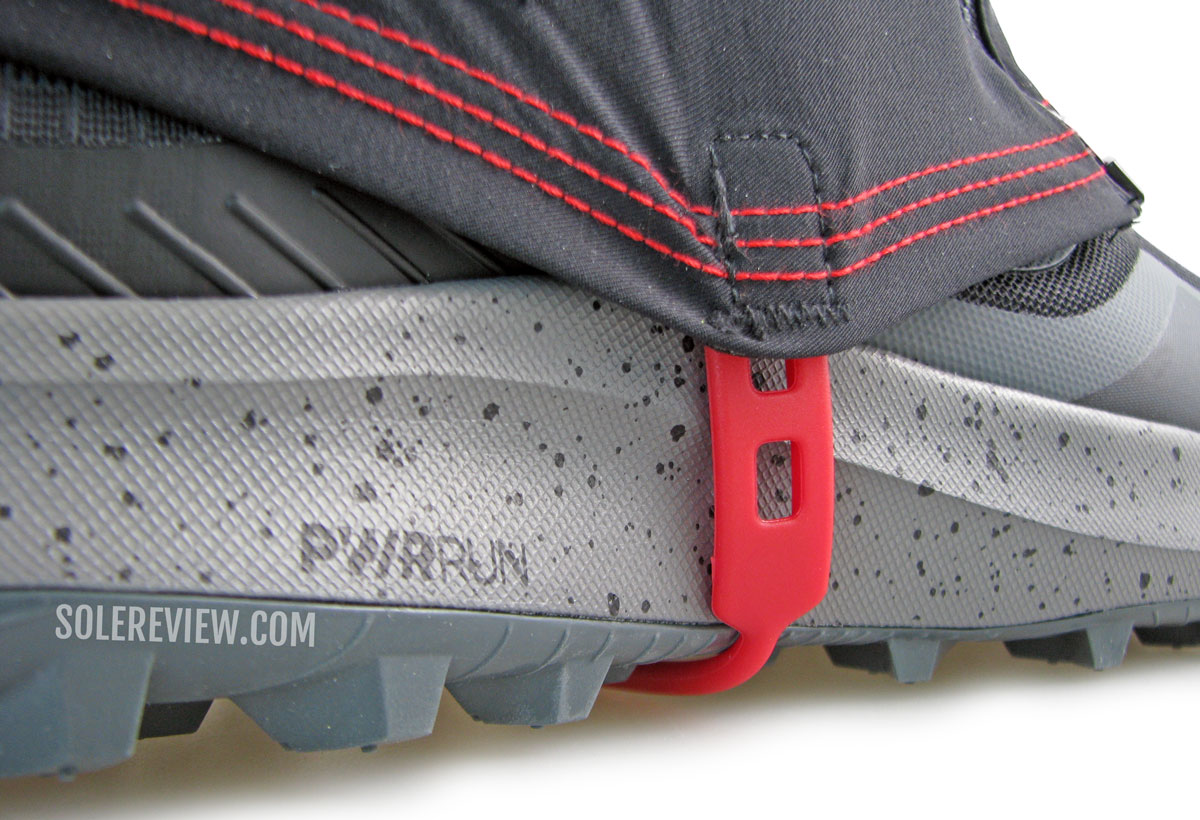
The thin rubber loop of the Kahtoola gaiter fits the midsole waist perfectly.
While both the standard and GTX variants share the same midsole and outsole, the Gore-Tex version gets a waterproof upper with a closed mesh. Helpful bits like the gaiter attachment points supplement the Peregrine 13 GTX’s waterproofing capabilities.
11) Saucony Excursion TR16 GTX
Saucony’s Excursion TR16 GTX is a basic trail running shoe that offers a waterproof fit at an affordable price.
As far as Gore-Tex running shoes go, a $110 MSRP ($10 increase over the TR15) isn’t bad at all. That being said, the Excursion TR16 isn’t what one would classify as high-performance. If it were not for the waterproof Gore-Tex upper, the standard Excursion TR16 is a $75 shoe. It’s obvious that this product is built to a price.
There’re no rock-plate or special outsole materials. The midsole is made of ‘Versarun’ – an EVA foam that Saucony uses in its entry-level products. From a performance standpoint, the Excursion TR16 GTX delivers a firm and supportive cushioning over the trail, and the outsole provides passable traction and protection.
The upper is sturdily built, relying on a combination of stitched and welded layers over a closed mesh. The exterior is nearly identical to the standard trail Excursion TR except for the tighter-knit mesh.
If it were not for the tiny Gore-Tex label on the heel, it would be hard to tell the difference.
Do you own any of these shoes? Improve this review by sharing your insights – submit a review here.

